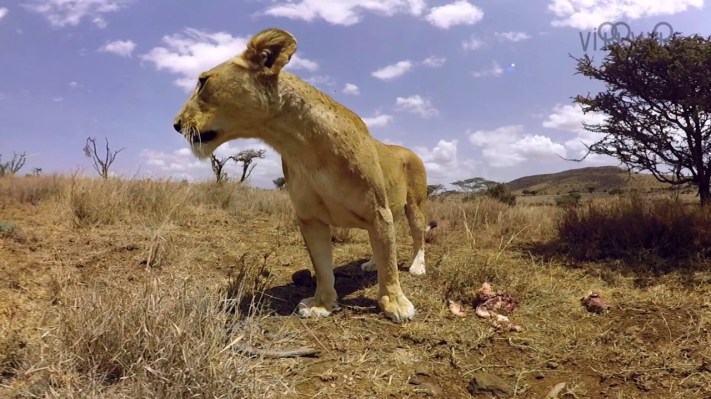One of the main uses of VR that has emerged since the technology experienced a resurgence is the ability to make you empathise with what you are experiencing. This happened to me the first time I ever did VR, when I watched Clouds Over Sidra, a short VR documentary that put you in the shoes of a Syrian refugee girl, living in a camp in Jordan. I don’t mind admitting that it actually made me cry on my video about the film. It’s this empathy effect that new startup Fountain Digital Labs is is trying to tap into with its Virry VR platform (now nominated for a Webby Award) which allows people to virtually engage with real African animals up close and in their natural habitat. Not all of us can go on a safari, but this just-released immersive virtual reality experience has now launched on PlayStation VR.
Filmed in 4K VR at the Lewa Wildlife Conservancy in Kenya, using strategically placed high-definition cameras, Virry VR creates a safari-like experience which also allows the user to control aspects of the narrative.
You can feed lions and even share mud baths with rhinos. Players can also take a trip down an African river and learn about endangered animals.
The initial release of Virry VR for PlayStation includes 35 minutes of experiences with wildlife.
Virry VR users can learn interesting facts, answer questions, and interact with the animals through the virtual experience.
For Virry VR it costs $9.99 and the Live Camera Subscription is $1.50/mo. You can also subscribe for $2.50/mo and thus to donate $1 to the Lewa Wildlife Conservancy.
For those who don’t have PS4, Virry’s original BAFTA award-winning app for iOS mobile devices is also an option. Subscriptions costs $19.99 a year.
Svetlana Dragayeva, Fountain Digital Lab CEO, says: “Virry immerses players in the lives of real animals, encouraging discovery, empathy, and problem solving, while helping them to better understand nature, conservation, and the world around them.”
The experience has won plaudits from Founding Director of The Virtual Human Interaction Lab at Stanford University, Jeremy Bailenson. He says “I have seen thousands of spherical videos and the footage from Virry VR is the most stunning nature scenes I have ever seen in any medium,” said Bailson. “Seeing a big rhino in its natural home from the perspective of a mud puddle inches away, or having a lion literally lick my face to test if I am edible, were among the coolest things I have done in VR to date. I predict this project will be a huge success in motivating people to learn more about nature and ecosystems.”
Dragayeva is a passionate about the capability of VR to awaken us out of our senses which have been deadened by imagery which is shocking or unusual: “As Sontag observed back in the 70s, ‘At the time of the first photographs of the Nazi camps, there was nothing banal about these images. After 30 years, a saturation point may have been reached. In these last decades, “concerned” photography has done at least as much to deaden conscience as to arouse it’.” So I am in this search for something new. Something that moves, touches, tickles an empathic impulse, creates a bond. VR seems to be well-suited for this at this current moment.”
